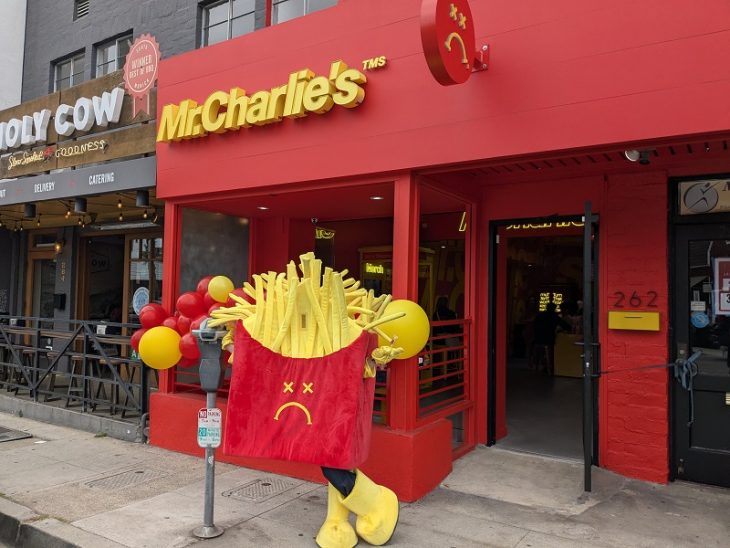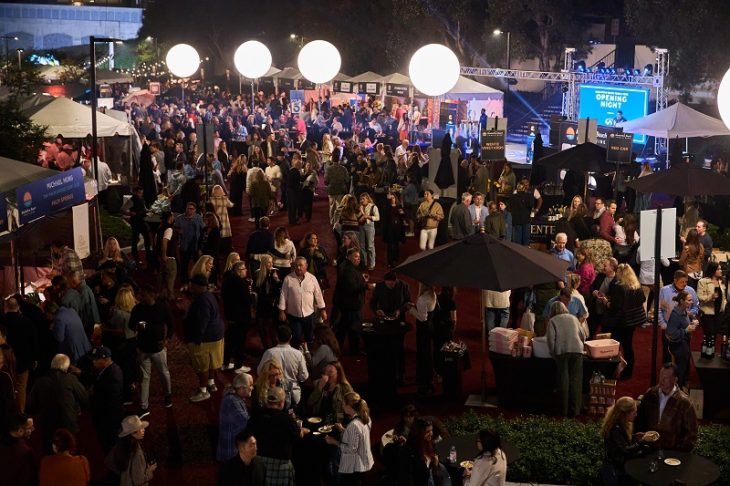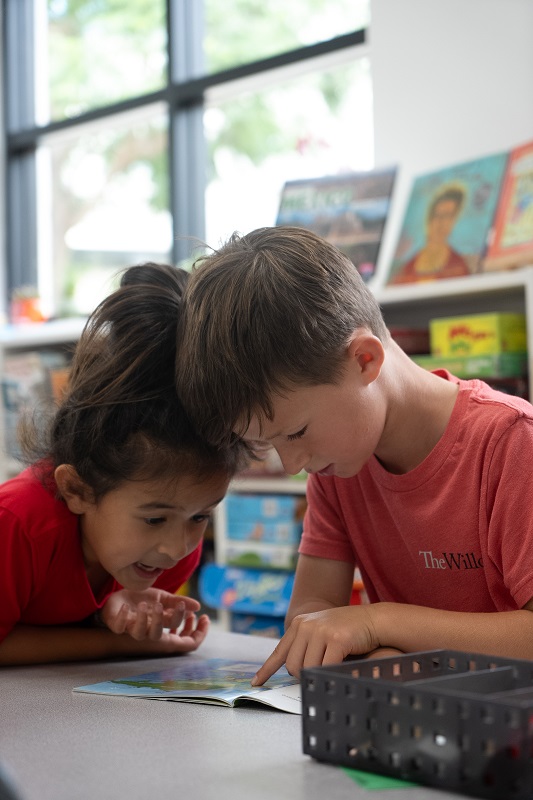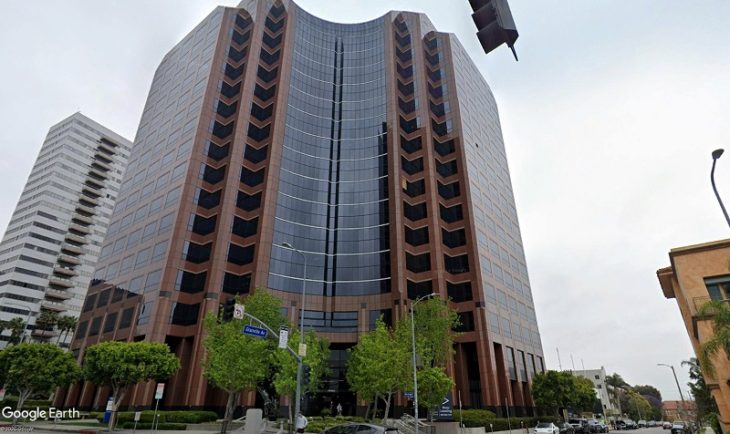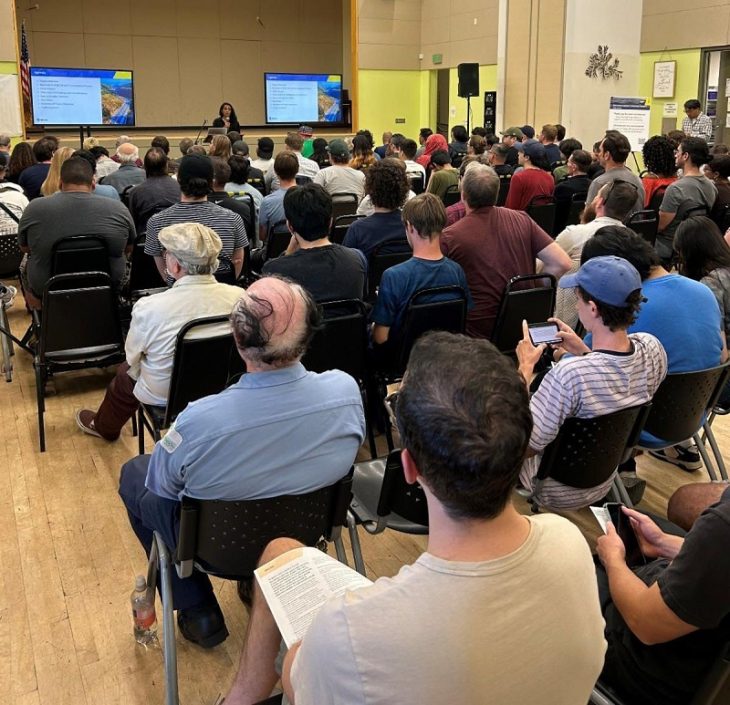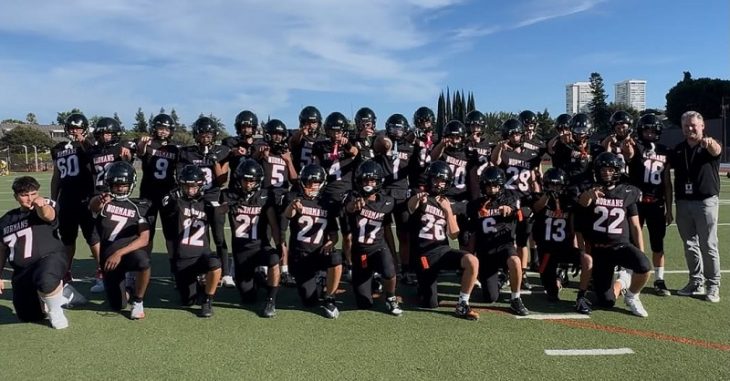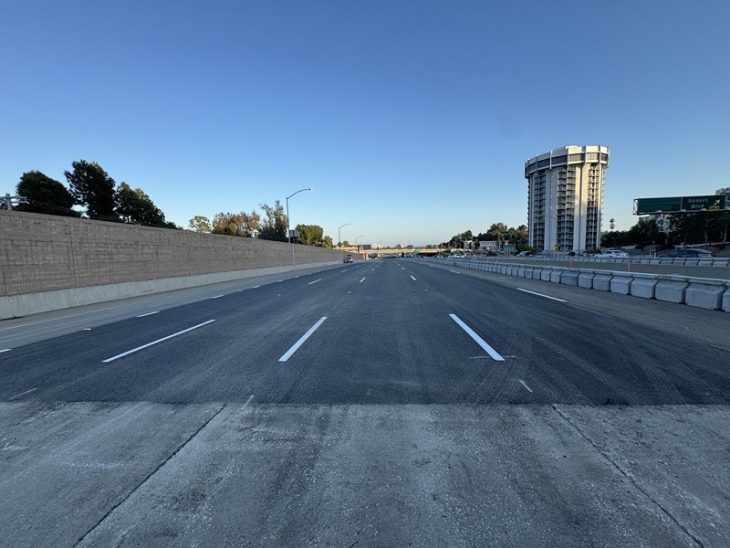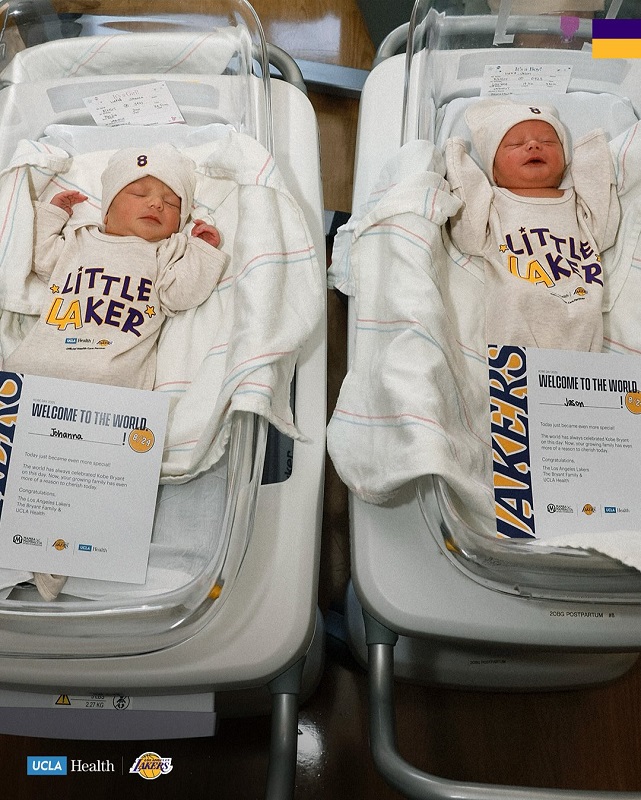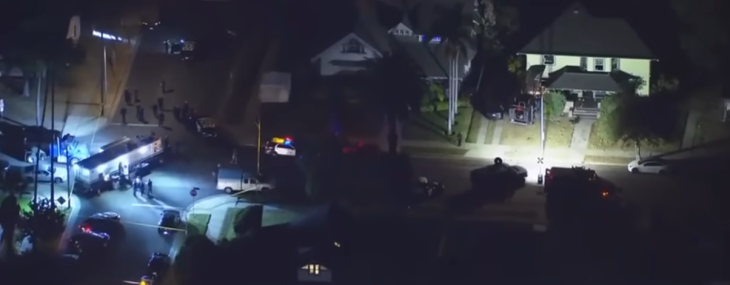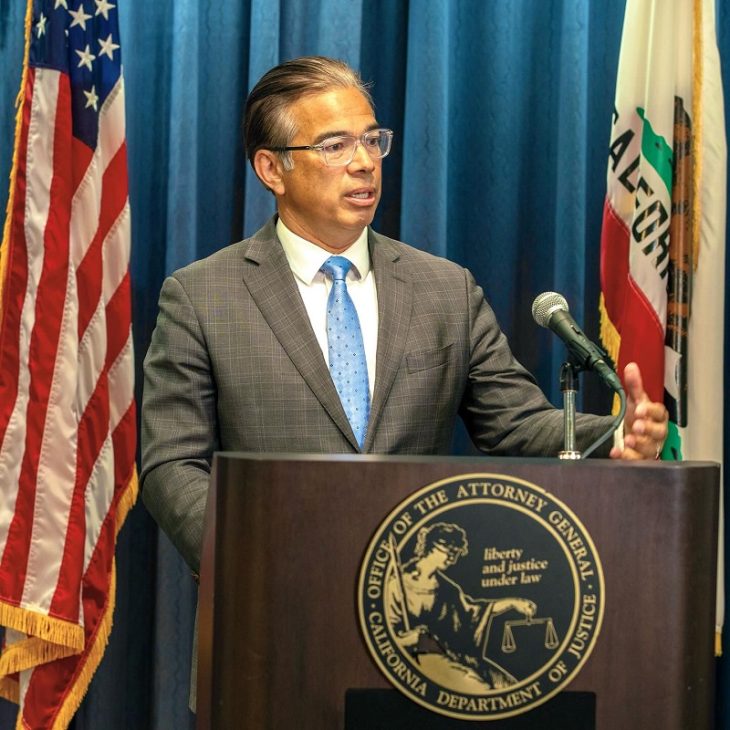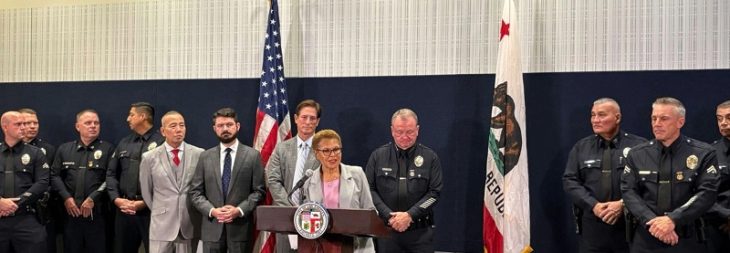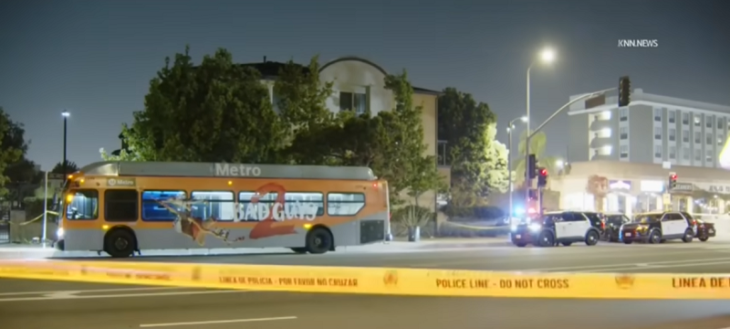UCLA’s Andrea Ghez wins 2020 Nobel Prize in physics
Andrea Ghez, UCLA’s Lauren B. Leichtman and Arthur E. Levine Professor of Astrophysics, Tuesday was awarded the 2020 Nobel Prize in physics.
Ghez shares half of the prize with Reinhard Genzel of UC Berkeley and the Max Planck Institute for Extraterrestrial Physics. The Nobel committee praised them for “the discovery of a supermassive compact object at the centre of our galaxy.” The other half of the prize was awarded to Roger Penrose of the University of Oxford “for the discovery that black hole formation is a robust prediction of the general theory of relativity.”
In July 2019, the journal Science published a study by Ghez and her research group that is the most comprehensive test of Albert Einstein’s iconic general theory of relativity near the monstrous black hole at the center of our galaxy. Although she concluded that “Einstein’s right, at least for now,” the research group is continuing to test Einstein’s theory, which she says cannot fully explain gravity inside a black hole.
Ghez studies more than 3,000 stars that orbit the supermassive black hole. Black holes have such high density that nothing can escape their gravitational pull, not even light. The center of the vast majority of galaxies appears to have a supermassive black hole, she said.
“I’m thrilled and incredibly honored to receive a Nobel Prize in physics,” said Ghez, who is director of the UCLA Galactic Center Group. “The research the Nobel committee is honoring today is the product of a wonderful collaboration among the scientists in the UCLA Galactic Center Orbits Initiative and the University of California’s wise investment in the W.M. Keck Observatory.
“We have cutting-edge tools and a world-class research team, and that combination makes discovery tremendous fun. Our understanding of how the universe works is still so incomplete. The Nobel Prize is fabulous, but we still have a lot to learn.”
UCLA Chancellor Gene Block lauded Ghez for her accomplishments.
“The UCLA community is exceedingly proud of Professor Ghez’s achievements, including this extraordinary honor,” Block said. “We are inspired by her research uncovering the secrets of our universe and its potential to help us better understand the cosmos.”
David Haviland, chair of the Nobel Committee for Physics, said: “The discoveries of this year’s Laureates have broken new ground in the study of compact and supermassive objects. But these exotic objects still pose many questions that beg for answers and motivate future research. Not only questions about their inner structure, but also questions about how to test our theory of gravity under the extreme conditions in the immediate vicinity of a black hole.”
Questioning Einstein
Ghez and her team have made direct measurements of how gravity works near a supermassive black hole — research she describes as “extreme astrophysics.”
Einstein’s general theory of relativity is the best description of how gravity works. “However, his theory is definitely showing vulnerability,” Ghez said in 2019. “[A]t some point we will need to move beyond Einstein’s theory to a more comprehensive theory of gravity that explains what a black hole is.”
Less than two months after her publication in Science, she and her research group reported in Astrophysical Journal Letters the surprising finding that the supermassive black hole is having an unusually large meal of interstellar gas and dust — and they do not yet understand why.
“We have never seen anything like this in the 24 years we have studied the supermassive black hole,” she said at the time. “It’s usually a pretty quiet, wimpy black hole on a diet. We don’t know what is driving this big feast.”
In January 2020, her team reported the discovery of a new class of bizarre objects — objects that look like gas and behave like stars — at the center of our galaxy, not far from the supermassive black hole.
Ghez and her team conducted their research at the W.M. Keck Observatory in Hawaii. They are able to see the impact of how space and time get comingled near the supermassive black hole, which is some 26,000 light-years away.
“Making a measurement of such fundamental importance has required years of patient observing, enabled by state-of-the-art technology,” Richard Green, director of the National Science Foundation’s division of astronomical sciences, said in 2019.
“Andrea is one of our most passionate and tenacious Keck users,” Keck Observatory director Hilton Lewis said, also in 2019. “Her latest groundbreaking research is the culmination of unwavering commitment over the past two decades to unlock the mysteries of the supermassive black hole at the center of our Milky Way Galaxy.”
The National Science Foundation funded Ghez’s research for the past 25 years. More recently, her research has also been funded by the W.M. Keck Foundation, the Gordon and Betty Moore Foundation and the Heising-Simons Foundation, Lauren Leichtman and Arthur Levine, and Howard and Astrid Preston.
In 1998, Ghez answered one of astronomy’s most important questions, helping to show that a supermassive black hole resides at the center of the Milky Way galaxy. The question had been a subject of much debate among astronomers for more than a quarter of a century.
A technology that changed the field
Ghez helped pioneer a powerful technology called adaptive optics, which corrects the distorting effects of the Earth’s atmosphere in real time and opened the center of our galaxy as a laboratory for exploring black holes and their fundamental role in the evolution of the universe. With adaptive optics at the Keck Observatory, she and her colleagues have revealed many surprises about the environments surrounding supermassive black holes, discovering, for example, young stars where none were expected and a lack of old stars where many were anticipated.
In 2000, Ghez and her research team reported that for the first time, astronomers had seen stars accelerate around the supermassive black hole. In 2003, she and her team reported that the case for the Milky Way’s black hole had been strengthened substantially and that all of the proposed alternatives could be excluded.
In 2005, Ghez and her colleagues took the first clear picture of the center of the Milky Way, including the area surrounding the black hole, at the Keck Observatory.
Ghez has earned numerous honors for her research, including election to the National Academy of Sciences and the American Academy of Arts and Sciences. She was the first woman to receive the Royal Swedish Academy of Sciences’ Crafoord Prize and was named a MacArthur Fellow in 2008. In 2019, she was awarded an honorary degree by Oxford University.
Ghez earned a bachelor’s degree in physics from MIT in 1987 and a doctorate from Caltech in 1992, and she has been a member of the UCLA faculty since 1994. When she was young, she wanted to be the first woman to walk on the moon.
Lessons from a stellar career
At a UCLA news conference hours after the Nobel announcement, Ghez discussed her research and shared lessons from throughout her career.
Asked about the potential for competition among astronomers to make the next major discovery, she said it took her about 10 years to learn the approach that has continued to serve her: “Focus on getting the science right, rather than being first.”
Among her future goals, she said, is learning and testing how gravity works near a supermassive black hole.
Ghez also encouraged young students who love science to pursue their dreams and learn how to overcome obstacles. “Follow your passions,” she said, “and be persistent…. Find comfort with discomfort.”
And she acknowledged that she is pleased to be recognized as a role model for young women, as she has been for decades. She published “You Can Be a Woman Astronomer” in 1995.
Ghez is the eighth UCLA faculty member to be named a Nobel laureate, joining Willard Libby (chemistry, 1960), Julian Schwinger (physics, 1965), Donald Cram (chemistry, 1987), Paul Boyer (chemistry, 1997), Louis Ignarro (physiology or medicine, 1998), Lloyd Shapley (economics, 2012) and J. Fraser Stoddart (2016). Stoddart was a Northwestern University faculty member when he received the honor, but much of the work for which he was recognized was conducted at UCLA from 1997 to 2008.
In addition, seven UCLA alumni have been awarded the Nobel Prize.
Ghez is also the fourth woman to receive the physics prize, following Marie Curie in 1903, Maria Goeppert Mayer in 1963 and Donna Strickland in 2018.

